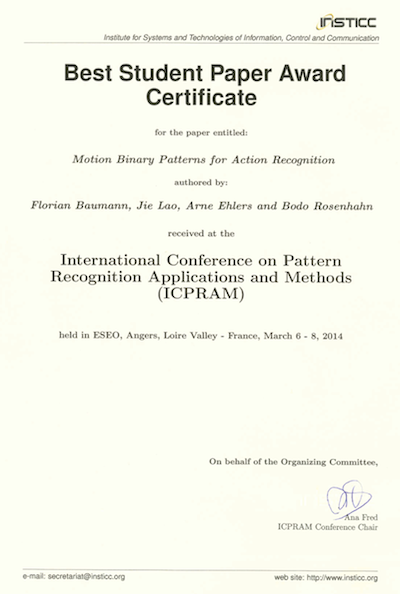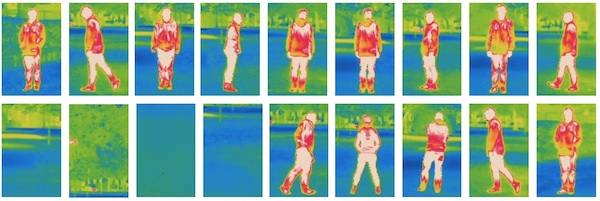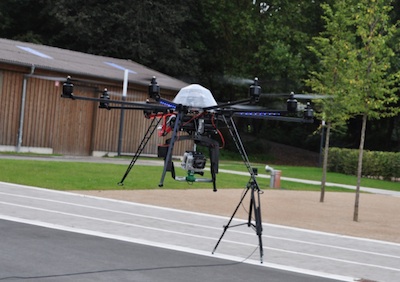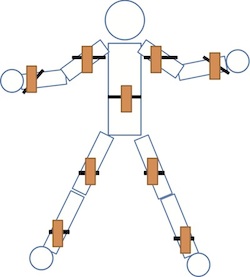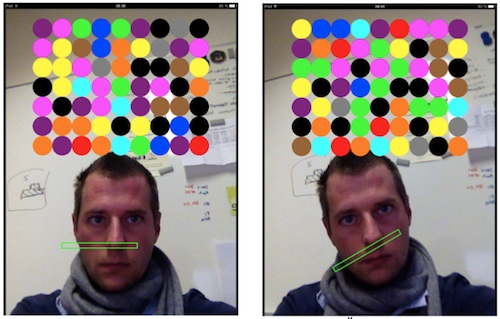Florian Baumann studied Electrical Engineering with a focus on computer engineering at the Leibniz University of Hannover. He received his Dipl.-Ing. in March of 2012. Since May of 2012 Florian Baumann is working toward a doctor's degree (Dr.-Ing.) in the group of Prof. Rosenhahn at the eNIFE.
His research interests are image processing, automated image interpretation and computer vision, e.g.:
- AdaBoost algorithm for object detection.
- Random Forest for (multiple) object detection.
- Human action recognition
- Mobile object detection with iOS and Android devices.

